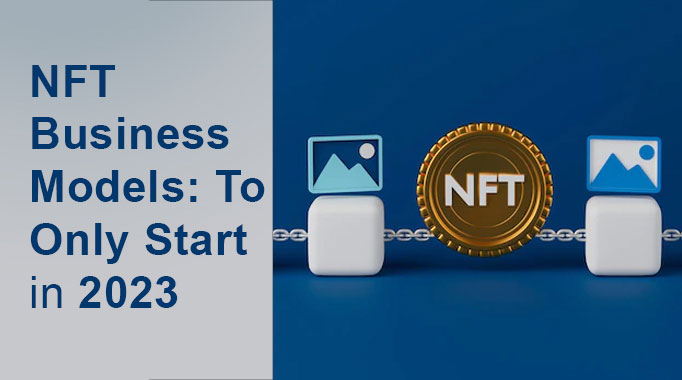Are you puzzled about making up your mind about the best blockchain for NFT marketplace development? We know everyone like you are getting this issue while choosing the best suitable blockchain platform for NFTs marketplace development. Don’t worry. You will be able to choose the best blockchain for NFTs by the end of this post.
Need NFT marketplace development?
Non-fungible Tokens(NFTs) are in vogue with the refinement of blockchain cryptocurrency technology. In 2021, the non-fungible token marketplace global market was valued at over $50 billion and was expected to reach a value of $147 billion by the end of the year 2026. So digital assets trading businesses have immense potential for generating high revenue and starting a business in the blockchain domain in the future.
NFT marketplace development companies are growing every day to provide innovative solutions to build a future-ready NFT marketplace where artists can sell, buy or trade digital arts and collectibles. Blockchain development companies leverage the blockchain for NFT marketplace development.
Blockchain platforms such as Etherium, Solana, Polygon, Binance Smart Chain, Flow, Cardano, and Tezos are for NFTs marketplace development. But there are such factors that you should keep in mind while choosing the blockchain for NFT marketplace development. Your selection today of the best blockchain platform will decide your tomorrow. So the question that comes to your mind is:
How do I choose a blockchain NFT marketplace?
Blockchain technology tokenized a wide range of digital assets from Art, Music, Photography, Sports, and Entertainment to Real states. Even then, all blockchain technologies are not suitable for the development of NFTs that are in your mind. Every blockchain platform has limitations and isn’t able to mint things. But rather to see the limitations we should consider these factors as follow.
- Transaction Speed
- Transaction and Token Development Cost
- Security
- Forking
- Consensus mechanism
- Robust Smart Contracts
Let’s explore one by one
Also read: NFT Business Models: To Only Start in 2023
Transaction Speed
Transaction speed plays a critical role in the overall success of the NFT marketplace. Some blockchains have a bit slow transaction speed, which means it will take more time in the transaction of NFTs. Whereas high-speed transaction blockchains on take a few seconds to complete the transactions.
High transaction speed gives less time to fishers to attack at the time of transaction.
However, high transaction speed is less safe more often. Because the level of securities or number of nodes is less as compared to low-speed blockchain transactions. So keep in your mind that choose the blockchain with high speed without compromising security.
Transaction and Token Development Cost
Every transaction on blockchain costs money. So before starting the development of the NFT marketplace, you should compare the different transaction fees by the various blockchains. We suggest you choose the fastest and cheapest blockchain for NFT marketplace development.
The token development cost for the developers should be as low as possible.
Not all NFT arts are sold at excessive prices. Most of the NFTs are at an affordable price, so when users buy a low-cost NFT art then, why do they pay a high transaction fee? So, choose the blockchain with the lowest transaction fees to draw more users to your NFT marketplace.
For example, you can see the per transaction fee on the Solana blockchain website.
Security
Blockchain was affected by cyber attacks such as a 51% attack in 2018. Blockchain is a peer-to-peer network and follows the consensus algorithm so attackers launch network communication attacks on the blockchain. These attacks lead to the loss of money and data.
Ethereum founder Vitalik Buterin told that this was a disadvantage for PoW networks, indicating that a Proof-of-Stake network would be less vulnerable.
So we suggest you choose blockchain based on the PoS network.
Forking
Forking is the updating of blockchain, like mobile software up-gradation. There are two types of forking Soft Fork and a Hard Fork. A soft fork is not to worry about, but a Hard fork changes the codes so much new version that is not compatible with previous blocks. So this poses a severe threat to the sanctity of the NFTs.
Due to hard fork, NFT owners can lose the value of old NFTs. To prevent owners from losing NFTs’ values while forking. It is necessary to choose the fork-proof blockchain for NFT marketplace development.
Consensus mechanism
Blockchain based on the PoW consensus mechanism is likely to be prone to attacks. Blockchain platforms that rely on the proof-of-work(PoW) have more issues than those relying on Proof-of-Stake (PoS) mechanism. So preferring the blockchain based on the PoS consensus mechanism is a wiser decision.
Etherium was initially based on the PoW, but with up-gradation to Etherium 2.0, it will change PoW to PoS consensus mechanism.
Robust Smart Contracts
Blockchain is completely based on smart contracts. Record the transaction between buyer and seller without any intermediate.
Often, well-coded and sophisticated smart contracts are safe and guarantee the security of the NFT marketplaces. But still choosing the robust and highly functional smart contracts is your priority for the advanced NFT marketplace development.
What are the best blockchains for NFT marketplace development?
We listed the best blockchain for NFT marketplace development. You can create a multi-category marketplace using them. Here is the list of blockchains for NFT marketplace development.
- Ethereum
- Solana
- Cardano
- Tezos
- Binance Smart Chain
Ethereum
Ethereum is a native cryptocurrency blockchain for NFT marketplace development. Currently, Ethereum is mostly used blockchain for NFT marketplace development because it is one of the earliest decentralized open source blockchains with robust smart contracts functionality.
With the Ethereum smart contracts, it’s easy to tokenize your digital art.
The popularity of Ethereum based NFT marketplaces are unprecedented. Most popular NFT marketplaces such as Rarible, OpenSea, SuperRare, and Decentraland, leverage the Ethereum network.
As we mentioned earlier you should prefer the blockchain based on PoS rather than the PoW mechanism. Because the Proof-of-Stake algorithm is more secure than the PoW.
However, Ethereum is also based on the PoW algorithm, but after the 51% attack, its founder Vitalik Buterin recognized this security loophole and started to move it to the PoS system.
Solana
Solana is the second blockchain for NFT development on our list. Solana has the lowest transaction and token development cost possibly. At the time of writing this post, the average cost per transaction is $0.00025 on Solana based apps and NFT marketplaces.
Presently, Solana is the fastest blockchain globally with 400 millisecond block times. Features like cheap and fast Solana guarantee highly secured transactions with a network of thousands of independent nodes spread online. Solana ensured that transaction costs will always be under $0.01 for both developers and users.
Solana NFTs‘ market cap is $970M, the average mint cost is $1.5, and more than 5.7 million NFTs are minted and traded.
On Solana based NFT marketplace such as SolSea, Metaplex, DigitalEyes, Solanart, Magic Eden, etc.
Cardano
Cardano was founded in 2015 and has one of the biggest cryptocurrency market caps. It’s an open-source blockchain peer-to-peer network for NFT marketplace development. Cardano follows the proof-of-stake(PoS) and Ouroboros model, so it is reliable against cyber threats such as 51% attacks and middle man attacks.
Cardano is developed using an evidence-based model. In simplest terms, it follows the agile methodology that allows developers to update, change and innovate NFT marketplaces as per the requirements parallel with the development process.
The other features of Cardano are high performance and environmentally sustainable. High performance is achieved with techniques such as side chains, multi-ledger, and parallel transaction processing. Cardano does not need extra energy when creating new blocks and speeding up a performance like other blockchains.
Cardano NFT marketplaces: CNFT.IO, AdaNFT, GalaxyofArt, etc.
Tezos
Tezos one of the best blockchains for NFT marketplace development launched in 2018. Tezos cryptocurrency is called “Tez” and denoted by the symbol ‘XTZ‘. Tezos market cap is US$1.86 billion to date. Tezos is another blockchain in the list of blockchains that follows the PoS algorithm.
One of the best features of Tezos is “Forkless” which means you will never get the problem of Forking. Tezos uses its on-chain mechanism to update and upgrade blocks.
Tezos is highly secure with the PoS model, required less energy, and is scalable. Tezos ecosystem is developing quite rapidly because it is built with a mechanism where people can participate easily to evaluate, propose, and approve amendments to Tezos.
Binance Smart Chain
Binance Smart Chain (BSC) is another rising blockchain for NFT marketplace development in 2022. This blockchain platform is EVM compatible, follows the Proof-of-Stack mechanism, and allows the cross-chain transfer.
Conclusion: Best blockchain for NFT marketplace development
Without being diplomatic, with our experience as a blockchain development company and NFT marketplace development company, Solana blockchain is the best blockchain to date. You can also choose the other blockchain mentioned above as your preference.
About the author
Popular Posts



